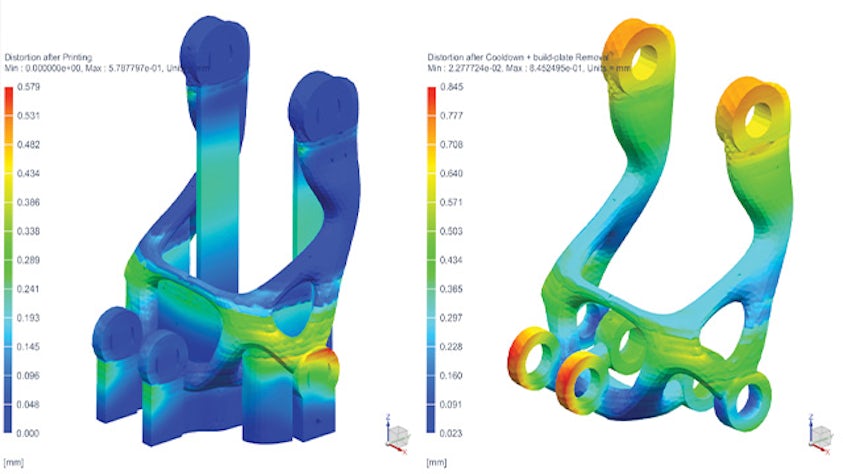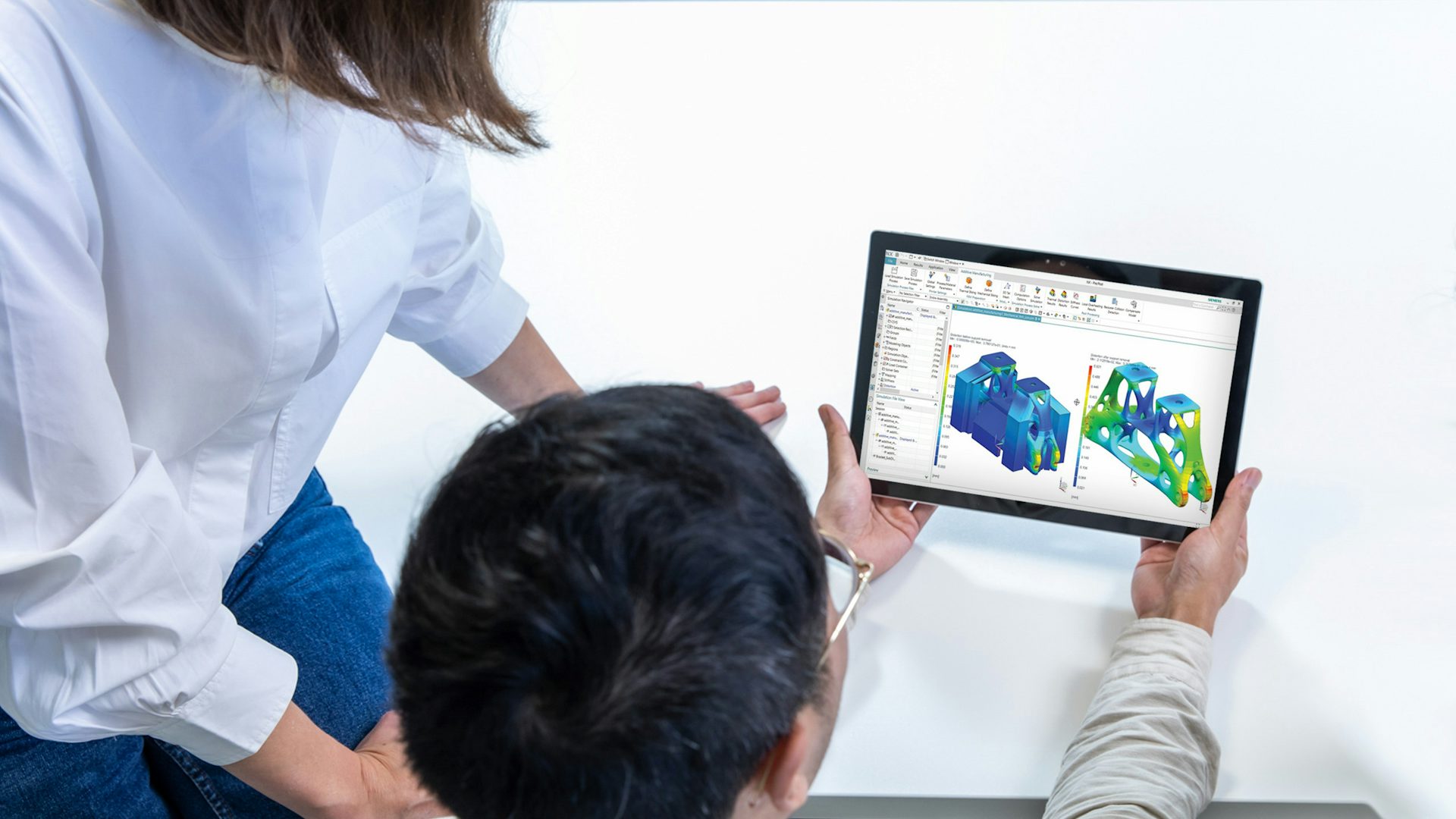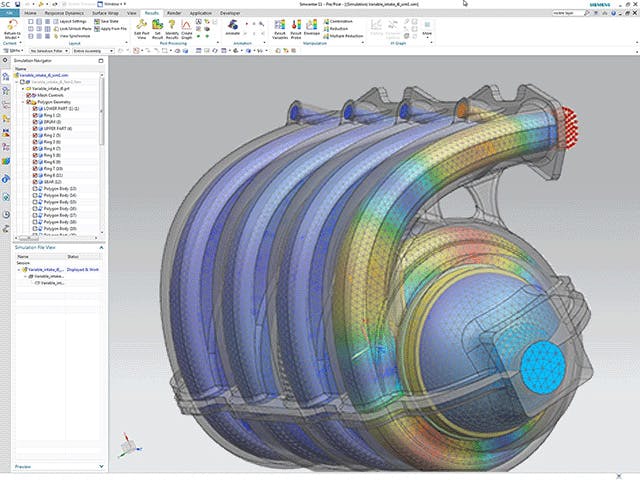The additive manufacturing (AM) process is changing the way products are made. It is a manufacturing method in which products are built up layer-by-layer by a specialized machine. Today, AM is still mainly a research and development activity as this process remains expensive and slow, preventing its use for large projects such as in the automotive industry. However, industrial applications are already linked to the printing of complex parts, which are difficult to produce by traditional methods. The primary goal is to create parts that are lightweight and have good mechanical properties. Repairing parts previously produced by traditional processes can also be a valuable application of AM due to the unique nature of each component. New revolutionary machines and processes are rapidly pushing AM from the prototype environment onto the production floor.
The additive manufacturing simulation capabilities in Simcenter can help you predict distortions and defects before parts are printed, thereby reducing the number of test prints and improving the quality of the final print.



